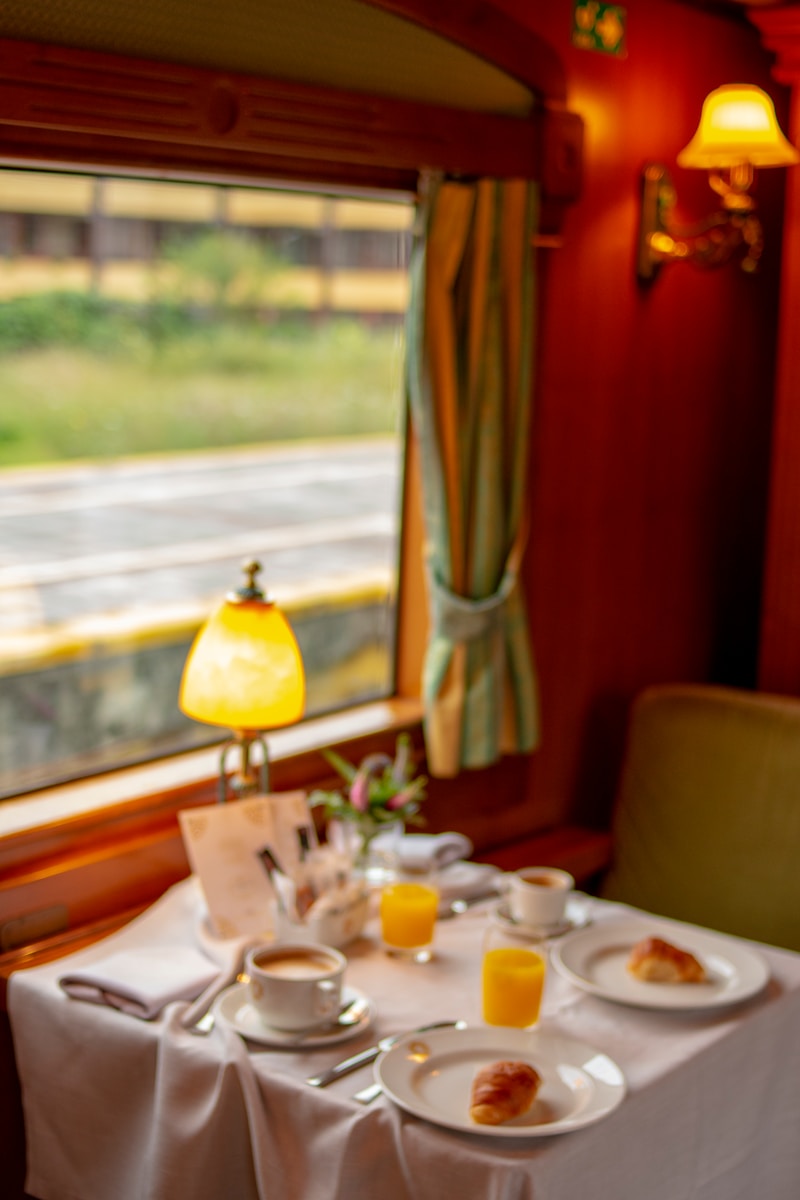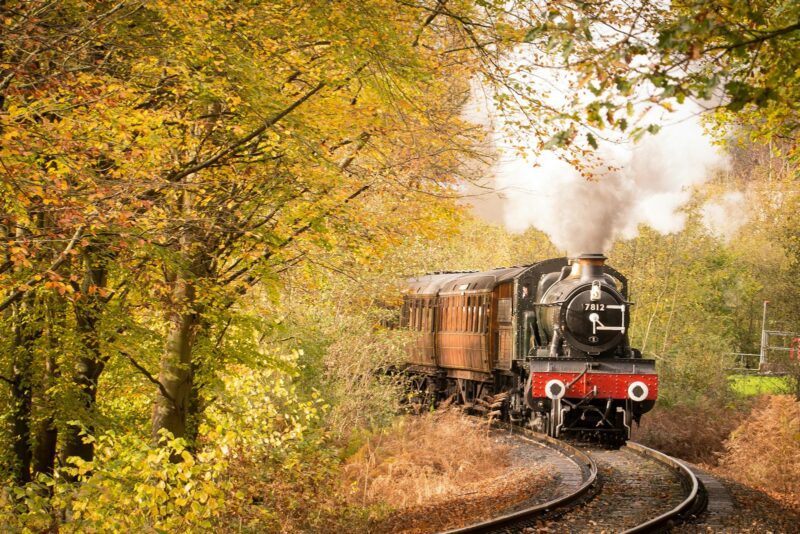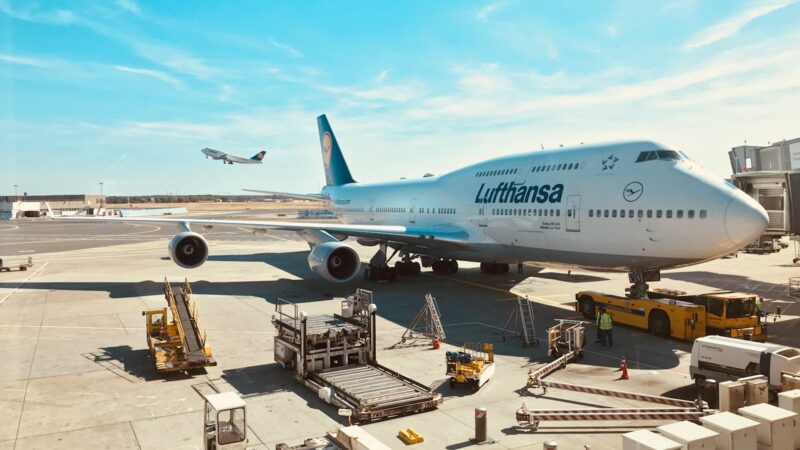Train travel can be a delightful experience when everyone follows basic etiquette. By being mindful of your actions, you can make the journey pleasant for yourself and others. Good train etiquette includes being quiet, keeping your space tidy, and respecting fellow passengers’ personal space.
When you board a train, you enter a shared space with diverse travelers. Some may be commuting to work, while others might be on vacation. Your behavior can impact their train travel experience. Simple acts of politeness, like offering your seat to someone who needs it more, can go a long way in creating a positive atmosphere.
Remember that train etiquette varies slightly depending on where you’re traveling in Europe or other parts of the world. It’s a good idea to familiarize yourself with local customs before your trip. By following these do’s and don’ts, you’ll ensure a smooth and enjoyable journey for everyone on board.
Table of Contents
TogglePreparing For Your Journey
Getting ready for your train trip is key to a smooth experience. Good prep work helps you avoid stress and enjoy the ride.
Booking And Seating
Make sure to book your tickets early. This gives you more seating options and often better prices. If you have a seat preference, like a window or aisle, ask for it when booking.
Check the train’s layout before you travel. This helps you find your seat quickly. Some trains let you pick your exact seat online.
Pack a small travel pillow and blanket for comfort, especially on long trips. Dress in layers so you can adjust to the temperature on board.
Packing And Luggage Management
Pack light. Most trains have luggage limits. A carry-on bag and a personal item are usually allowed. Check your train company’s rules before packing.
Keep important items in your personal bag. This includes your ticket, ID, money, and credit cards. Don’t forget any needed medications.
Bring entertainment for the journey. Books, tablets, or music players can make the time pass quickly. Remember headphones to be polite to other passengers.
Pack some snacks and a water bottle. While many trains have food cars, it’s nice to have your own options.
Wear comfy clothes and shoes. You might need to walk between train cars or stations.
Behavior In Shared Spaces
Train travel means sharing space with others. Being mindful of your actions helps everyone have a better trip. Let’s look at some key ways to be a courteous passenger.
Boarding And Disembarking
When it’s time to board, form an orderly queue. Don’t push or rush – your seat will still be there. Let elderly passengers, families with young children, and those with mobility issues board first.
Once on the train, move quickly to your seat. Don’t block the aisle while storing luggage. If you need help, ask a staff member.
When arriving at your stop, gather your belongings quietly. Start preparing a few minutes early so you’re ready to exit promptly. Don’t push past others in a hurry to get off.
Maintaining Personal Space
Respect others’ personal space on the train. Keep your legs, arms, and belongings within your seat area. Don’t spread out across empty seats unless the train is nearly empty.
Be mindful of your luggage. Store it in designated areas, not in the aisle or on empty seats. If using overhead bins, be careful not to bump other passengers when retrieving items.
Avoid eating strong-smelling foods that might bother others. If you must eat, do so quietly and neatly.
Noise And Distractions
Keep noise to a minimum. Use headphones when listening to music or watching videos. Keep the volume low enough that others can’t hear it.
For phone calls, speak quietly. Better yet, move to the vestibule area between cars for longer conversations.
Avoid loud conversations with your travel companions. Remember, not everyone wants to hear about your day.
If traveling with children, bring quiet activities to keep them occupied. Gently remind them to use indoor voices.
Interacting With Fellow Passengers
Train travel often involves sharing space with strangers. Being mindful of others can make the journey more pleasant for everyone. Here are some tips for positive interactions.
Polite Communication
When talking to fellow passengers, use a friendly tone and keep your voice low. A simple “please” and “thank you” go a long way. If someone looks busy or tired, respect their space.
Be careful with small talk. Some people enjoy chatting, while others prefer quiet. Watch for cues that show if someone wants to talk.
If you need to make a phone call, keep it brief and speak softly. For longer calls, try to move to a designated quiet area if available.
Sharing Amenities
Be considerate when using shared spaces like luggage racks or dining cars. Don’t spread your belongings across empty seats. Make room for others’ bags too.
If the train is crowded, offer your seat to pregnant women, elderly passengers, or those who seem to need it more. This kind gesture can make a big difference in someone’s journey.
When using tray tables or armrests, be aware of your neighbor’s space. If you’re listening to music or watching videos, use headphones to avoid disturbing others.
Managing Children and Pets
Bringing children and pets on a train journey requires careful planning and consideration for other passengers. Follow these tips to ensure a smooth trip for everyone.
Traveling With Children
Keep your kids entertained during the journey. Pack their favorite toys, books, or games to prevent boredom. Bring snacks and drinks to avoid hunger-induced meltdowns.
Be mindful of noise levels. Use headphones for electronic devices and encourage quiet activities. Remind your children to use indoor voices and not kick the seats in front of them.
Take regular breaks if possible. Let kids stretch their legs at stops to burn off energy. This can help prevent restlessness during long rides.
Prepare for messes. Bring wipes, extra clothes, and plastic bags for accidents or spills. Clean up after your children to keep the space tidy for others.
Traveling With Pets
Check the train company’s pet policy before booking. Some allow only small pets in carriers, while others may have more flexible rules. Make sure your pet is comfortable with travel before embarking on a long journey.
Keep your pet in a secure carrier or on a short leash. This prevents them from bothering other passengers or getting loose in the train.
Pack essentials for your pet. Bring food, water, treats, and waste bags. Take your pet for a walk before boarding and at stops when possible.
Be considerate of other passengers. Some may have allergies or fears. Keep your pet calm and quiet throughout the trip. Clean up any messes promptly.
Handling Food And Beverages
Eating and drinking on trains can be tricky. It’s important to be considerate of other passengers and follow some basic rules. Here’s what you need to know about food and alcohol on your train journey.
Eating On The Train
Bringing snacks or meals on the train is often allowed, but be mindful of others. Choose foods with minimal odors and easy cleanup. Sandwiches, fruits, and packaged snacks are good options.
Always clean up after yourself. Dispose of wrappers and containers properly. Use napkins to avoid spills.
If you’re in a dining car, follow proper table manners. Be polite to staff and other diners. Keep your voice low.
For long trips, consider buying food from the onboard cafe or bringing a packed lunch. This can save you money compared to station prices.
Remember to bring a reusable water bottle. Many trains have water fountains for refills.
Alcohol Consumption
Train travel etiquette regarding alcohol varies by country and railway company. In some places, it’s allowed; in others, it’s banned.
If alcohol is permitted, drink responsibly. Limit your intake to avoid disturbing other passengers. Never drink alcohol you’ve brought on board if it’s not allowed.
Use plastic cups or cans instead of glass bottles. This reduces the risk of breakage and injury.
Be prepared to show ID if asked. Some train services may check your age before selling alcohol.
If you’re planning to drink, consider using a credit card for purchases. This helps you keep track of spending and avoid carrying extra cash.
Dealing With Emergencies
Knowing how to handle emergencies on a train can make a big difference. You’ll feel more prepared and able to help if needed. Let’s look at key safety steps and health tips for train travel.
Safety Protocols
Be aware of emergency exits when you board the train. Look for safety information cards in your seat area. These show where exits are and how to use them.
Listen to crew instructions during emergencies. They’re trained to help passengers stay safe. Don’t panic – stay calm and follow directions.
If you see something unsafe, tell a crew member right away. This could be a fire, suspicious package, or a passenger who needs help.
Keep your belongings close and know where your important items are. In case of a quick exit, you’ll want easy access to essentials.
Health And Hygiene
Pack a small first aid kit for your trip. Include basics like bandages, pain relievers, and any personal medications. Stay hydrated during your journey. Bring a refillable water bottle and use it often. Wash your hands regularly or use hand sanitizer. This helps prevent the spread of germs in shared spaces. If you feel unwell during the trip, let a crew member know. They can help or call for medical assistance if needed. Be mindful of fellow passengers. If someone near you seems ill, offer help or alert train staff. Consider wearing a mask in crowded areas to protect yourself and others from airborne illnesses.
Train Travel Etiquette Conclusion
Train travel etiquette is key to making your journey enjoyable for everyone. By following a few simple guidelines, you can contribute to a positive atmosphere on board.
Remember to keep noise levels down. Use headphones when listening to music or watching videos. Speak softly if you need to have a conversation.
Be mindful of shared spaces. Keep your luggage stored properly and don’t spread out across multiple seats. Treat your fellow passengers with respect and be considerate of their personal space.
Practice good hygiene. Avoid eating strong-smelling foods and clean up after yourself. If you’re feeling unwell, wear a mask to protect others.
Be prepared for your trip. Have your ticket ready, arrive on time, and know your stop. This helps keep the train running smoothly for everyone.
Additional Resources
Want to become a train travel pro? Check out these handy tools and guides:
- Train company websites: Most offer trip planners, ticket booking, and station info. Bookmark them for easy access.
- Travel apps: Download apps like Trainline or Rail Planner. They give you real-time updates and platform numbers.
- Station maps: Familiarize yourself with station layouts before you travel. This helps you find your way quickly.
- Dining car menus: Many trains post their menus online. Plan your meals in advance to avoid disappointment.
- Packing lists: Create a checklist of essentials. Include items like a water bottle, snacks, and entertainment.
- Etiquette guides: Read up on train travel etiquette for different countries. Customs can vary, so be prepared.
- Seat reservation systems: Learn how to book specific seats. This ensures you get your preferred spot.
- Local transit info: Research how to get from the station to your final destination. It’ll save you stress upon arrival.














